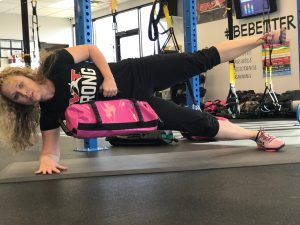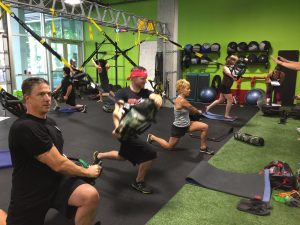What Muscles Does This Work?! Ultimate Sandbag Fitness
2017-01-9
Building Smarter Muscles With Ultimate Sandbag Fitness

Jessica Bento, Physical Therapist
It is understandable, in fact, I think it is one of the BIG reasons that a lot of people like the idea of functional training, but tend to default back to many bodybuilding strategies. I understand because my mom was an aerobics instructor at the local gym in the 80’s so I’ve truly seen it all. So, Ultimate Sandbag fitness programs are WAY ahead of where I’ve seen fitness.
“So, what am I suppose to be feeling?” It is probably the most common question when people really focus on functional movements. Most times, our DVRT Ultimate Sandbag fitness exercises aren’t targeted to work your biceps, your quads, or cramp up your abdominals.
Rather, they are meant to teach your body to move better, be stronger, and be more resilient to injury. While some may argue that the same can be done working just the muscles they are missing the real difference in functional training and Ultimate Sandbag fitness.
Legendary Strength Coach, Vern Gambetta, explains what functional training is all about really well….”The body is a link system; this link system is referred to as the kinetic chain. Functional training is about linkage – it is how all the parts of the chain work together in harmony to produce smooth efficient patterns of movement. Conventional academic preparation still focuses on studying individual muscles based on classical anatomy. This is where the confusion begins as to what is functional movement. We must remember that we do not function in the anatomical position. The anatomical position is static; it provides us with the perspective of mental convenience to arrange of all the individual muscles for ease of study and observation. In order to truly understand functional training we must get away from the focus on muscles and focus instead on movements. It is important to emphasize that the brain does not recognize individual muscles. It recognizes patterns of movement, which consist of the individual muscles working in harmony to produce movements required by the sport.”

This might seem really odd if no one has taken time to explain how the body really works. It isn’t what a muscle does in isolation, but what the body does in integrated movements. A great example comes from my world, that of physical therapy, and what PNF (proprioceptive neuromuscular facilitation) does for so many people.
You might be familiar with lifts/chops, you might not. These are diagonal patterns that are based upon the PNF principles. That is the work that neurologist, Herman Kabat, started back in the 1930’s and 40’s to help people with neurological disorders like cereal palsy and other aliments. The goal was to enhance and create movement in areas where the neurological system has been compromised. So, you can already see we are looking far deeper than “what muscle is working”, we are placing emphasis on how does movement occur!
Such a practice of restoring movement gave a lot of steam to the idea that “proximal stability creates distal mobility”. In essence, the neurological system dictates a lot of our movement and actions of our muscles. When something important, like the spine, feels unstable to the nervous system it protects itself by reducing the range of motion in the shoulders and hips. Using these diagonal patterns is a way to turn “on” these reflexive muscles that help create stability and mobility and therefore help with restoring movement and mobility.

It makes sense then that because of our lifestyle of sitting at desks, staring at computers, etc., many of these muscles stay “off” as we try to train. Turning them back on with the these diagonal patterns is HUGE in restoring real world movement and strength.
For those of you that are familiar with lifts/chops, that’s great! However, most people just don’t know where to go with them or how to progress them. The fact that diagonal patterns were mostly in therapy, the fitness and performance arena doesn’t quite have the same blueprint for applying these concepts.
That is why in our DVRT Ultimate Sandbag Training Restoration course we spend quite a bit of time talking about how to use lift/chop patterns from very fundamental levels to high performance. Makes sense doesn’t it? If these patterns are capable of restoring movement and getting our body to work better, if we use them in a strength format image what happens to our functional fitness?!!
In order to illustrate HOW dynamic these concepts can be take a look at some our DVRT Ultimate Sandbag fitness drills in today’s blog post. We love to use the lunge patterns with lifts/chops because they work so beautifully with the dynamic nature of the exercises plus we can really focus on hip, torso and shoulder integration to the highest levels.
Interestingly enough, you might not feel your abs on fire, your shoulders burning, or your legs falling off. You do feel “worked” though! You hit this point where EVERYTHING just gets TIRED! That is largely your nervous system tapping out and then the muscles follow. THAT is how functional training works. When people ask us “what muscles do these DVRT Ultimate Sandbag Training exercises work?” It sounds like maybe a cop out, but when you understand the body you realize it is true….ALL OF THEM!
Don’t miss the chance to save 20% on our NEW DVRT Ultimate Sandbag Training Restoration course with coupon code “restore” HERE
© 2025 Ultimate Sandbag Training. Site by Jennifer Web Design.






